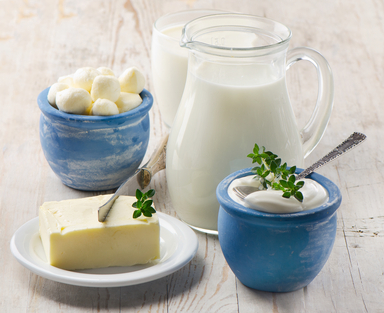Guyside: Buddy, can you spare some time?
I am a wonderful avoider of exercise. When it comes down to it, part of me believes what Neil Armstrong said: “I believe that every human has a finite number of heartbeats. I don’t intend to waste any of mine running around doing exercises.”
Last month, I wrote about winter and weight. Well, it’s winter — no doubt about it. Polar vortexes (vortices?!), snowmageddons, flight cancellations by the hundreds, North America has been walloped by winter this year.
And between the weather (which has seemed to swing like a pendulum between mounds of snow and temperatures just above absolute zero), a nasty virus that laid me out for nearly a week, and the holidays, my winter exercise resolutions are already getting tattered.

Ruts are dangerous things.
So what’s a guy to do if they’re feeling behind the eight-ball? In my case, I’m gonna recruit me a workout buddy. I have some experience in knowing that the buddy system works. When I went to university about a million years ago, I nearly flunked calculus. In fact, I was severely flunking it. But luckily for me, I knew a guy in my class who was struggling as hard as I was. Jeff and I became study partners, and while we weren’t exactly prizewinners by the end of the course, we made it. Jeff was a bit of a gym rat, too, and I became a gym buddy for a while too. Not enough of one to change my body shape, but better than I was.
Years later, I was encouraged by my partner, whose self-discipline and dedication dwarf mine, to take out a family membership at the local Y. And for quite a while, we were regulars there together; she’d do cardio & I’d do weights, or vice versa.
And as a cyclist, having people who will call you up and say “Hey! You ridin’ this morning?” is a very good thing. Of course, that is only really going to help when spring begins to spring.
So as I contemplate my fitness state, I know I need a fitness buddy. And researchers who have examined the Kohler effect have found that the “buddy system” works. So I have three strategies I’m gonna follow.
#1: I am a cyclist first and foremost, so step one is to get some spinning classes booked. Once I’ve spent the money on them, my cheap side will make me go, and the combination of people I’m stronger than that I can beat and people that are stronger than me that make me want to beat them will be a good motivator.
#2: I have some friends who are in similar need of breaking Neil Armstrong’s rule about heartbeats, so I’m going to talk to them.
#3: Since neither my partner and I are skiers, we’re going to try snowshoeing. The skill level should be a little lower; the cost of buying in is definitely lower; and we’re close to some lovely nature trails. And she’ll drag my sorry butt out of the house when I won’t do it for myself.
What are your strategies for breaking out of the exercise rut?
Read MoreDairy. Do? Or, Don’t?
 It’s a new year, we’re past the holidays and those resolutions to eat better may be confusing. Where do you start? And what should you give up first? Sugar? Grain products? Fats?
It’s a new year, we’re past the holidays and those resolutions to eat better may be confusing. Where do you start? And what should you give up first? Sugar? Grain products? Fats?
Whoa! Hold on there, because what I’m about to share may rock your world when it comes to thinking about fats.
When I think about fatty foods, one of the first things I think about are dairy products. Yet, research shows that dairy intake is below the recommended level, despite well-established recommendations and of course, their contribution to bone health. What’s more, it appears that eating dairy products may actually lower the risk for metabolic syndrome — the constellation of conditions such as obesity, glucose intolerance, high blood pressure and high cholesterol — that together lead to diabetes, coronary artery disease and stroke. A scary related fact is that metabolic syndrome affects more than a third of women after the age of 55, and has been linked with hormonal changes that occur during menopause (check out the metabolic syndrome posts in the Archives).
In a review in the January online edition of Maturitas, Canadian researchers share a few important facts about dairy products and why you may want to reconsider their role in your diet:
- Obesity. Contrary to popular belief, eating dairy may actually protect against weight gain. While this appears to be counterintuitive, research has shown that dairy may have a beneficial effect on the way that the body breaks down sugar and converts it to fat for storage, and instead, promote the breakdown of fats. Calcium also appears to help the body break down large fat molecules so that the fat is more readily available for energy. And, whey protein appears to help preserve muscle, while lactose and dairy proteins may boost the feeling of fullness. What’s more, eating dairy may actually help reduce that tire around your midsection. However, like any dietary rule of thumb, too much is too much. Dairy intake should be limited to two to three servings a day and products should be consumed along with a balanced diet.
- Blood sugar. While the evidence is still being teased out, dairy may help to keep blood sugar levels in check by preventing insulin sensitivity, that is, balancing the way that insulin is produced and the cells’ reaction to it (when cells lose their sensitivity to insulin, diabetes results).
- Fat in, fat out. Dairy products have long been linked to saturated fat, which has been shown to increase the risk for heart disease. Yet, in moderation, whole fat dairy may actually help balance cholesterol and blood fats levels and even boost good cholesterol – HDL – levels. Still, this is not a free pass for eating all the whole dairy products that your heart desires; everything in moderation. In other words, if your daily intake includes a serving of whole dairy, you need to compensate elsewhere in your diet.
- Blood pressure. Data suggest that consumption of 3 servings a day of low-fat dairy products may actually reduce the risk of high blood pressure by roughly 16%. The best choices appear to be ‘fluid dairy’ (i.e. milk and yogurt) rather than cheese. While researchers are uncertain how dairy yields a protective effect on blood pressure, it may be due to their action on the cells that line blood and lymphatic vessels. Among their various function, these cells, better known as the endothelium, help keep the blood pressure in check.
- Inflammation. Increasingly, low grade inflammation in the body is being linked to disease. In fact, it is considered a key factor in the development and progression of metabolic syndrome. Certain components in dairy may actually reduce blood markers of oxidative stress and inflammation.
I asked my friend and colleague, and registered dietician/nutritionist extraordinaire Danielle Omar to weigh in on dairy and whether there is any advantage to using low fat versus full fat products. She says that she’s “not a huge fan of fat free dairy products, especially skim milk. The fat in milk helps with the absorption of fat soluble vitamins (A, D, E, K) and other nutrients that can only be assimilated into the body when eaten with fat,” adding that it’s likely that “choosing more fat free vs whole fat dairy will cause weight gain over time.” The reason? People tend to eat more low- versus full-fat dairy before they are satisfied. Moreover, some of the low-fat dairy products are very high in sugar and without fat to slow digestion can cause insulin spikes/hunger crashes — can lead to overeating. Danielle also says that “people tend to overeat low-fat foods because they think they are being “healthy.”
Dairy? Do! Just be certain to balance it out with other healthy items in your diet.
Read MoreWhat’s the latest on calcium supplements?
Calcium. Lord knows that both men and women need calcium for bone health. However, women in particular start to lose bone density as early as age 35 and, within the first 10 years of the onset of menopause, up to 50% of spongy, or trabecular bone (the network that makes up most of bone structure) and up to 30% of cortical bone (the outer shell) are also lost.
Despite its importance to bone health, there is a lot of controversy surrounding calcium, particularly when it comes to the recommended dietary allowance or RDA. Currently, the Institute of Medicine recommends that women between the ages of 19 and 50 ingest at least 1,000 mg a day and those over 50, 1,200 mg a day. Still, too much of a good thing is too much; an overreliance on supplementation (often as a result to avoid milk, yogurt, cheese and other dairy products) may increase the risk for heart disease and kidney stones.
In a review in the journal Menopause, researchers note that women who rely on supplements for their daily calcium needs more often than not take doses that exceed the RDA. The reason that this is problematic is that our bodies cannot absorb more than 500 mg daily of calcium from either food or supplements in any two-hour period, so if you are eating calcium rich foods (which in addition to the aforementioned dairy also includes canned fish with bones, tofu, calcium-fortified products, broccoli, collards and kale), also adding a daily supplement may take you to a place that you want to avoid. Importantly, while higher dietary calcium from food actually appears to reduce kidney stone formation and may even offer protection from heart disease, the opposite is true for supplements:
- In the Women’s Health Initiative study, exceedingly high intake of calcium (from a combination of diet and supplements) was shown to increase the risk for kidney stones by 17%.
- While the link between calcium supplements and heart disease is still being teased out, findings from a large review concluded that they raised the risk for heart attack by as much as 30%.
What should you do?
- Obtain as much calcium as you can from your diet to meet recommended daily goals and only take supplements if this is impossible or if recommended by your health practitioners.
- Contrary to popular belief, the RDA goal for calcium can often be reached by taking only 500 mg daily of calcium via supplement.
- If you are going to rely on calcium supplements, form matters. Researchers believe that calcium citrate may be less likely to cause kidney stones than calcium carbonate. And as I wrote back in 2009, there may be an advantage to a form of calcium known as ossein-hydroxyapatite complex (OHC), which is the mineral component of bones and teeth (OHC goes by the brand name of MCHA or MCHC and is easily found on the web).
Read More
New Year? New You!
Want to know one of the most important resolutions that you can make? Commit to you!
I write about a lot of topics on Flashfree but the overriding theme is health and the importance of taking care of yourself. And no one can do that better than you can, that is, once you make a commitment to become healthier and identify strategies that work best for you. There are four tips that I’d like to offer to help you get over the initial hump.
- Move. I can’t emphasize the importance of physical activity enough. From bone health to heart health to mental health, it is the one accessible, equal opportunity strategy, regardless of income or geography. Because even if you don’t have entry to the gym, you can walk, run, bike, step, or engage in other activities that don’t require a membership or a monthly fee. In addition to counterbalancing the calories that you ingest daily, simply simply engaging in vigorous physical activity, i.e. 7 days of a combination of moderate intensity/intense activities that add up to 3000 MET minutes a week) can significantly decrease menopausal symptoms, in particular fatigue, depression, insomnia and hot flashes. (Activity level is scientifically measured by units known as METs, or metabolic equivalents; vigorous activity is equivalent to 8 METs and moderate activity to 4 METs).
- Be conscious. My grandmother used to say ‘everything in moderation.’ When it comes to diet, I don’t engage or believe in deprivation but I do try to balance out the occasional junk and sweets with healthy, daily doses of vegetables, fresh fruit, lean proteins and fiber. Researchers say that what you eat is extremely important. In a study of over 500 women, the strategy that worked best, leading to an average weight loss of 17 pounds over six months, entailed boosting intake of soluble fiber, fruits, veggies, whole grains and sources of plant stanols/sterols (i.e. almonds, brussel sprouts, wheat germ/bran, peanuts, olive oil and omega-3s). However, they also started moving more and adding regular, moderately intense activity to their daily routines.
- Engage. Want to know the key to health and wellbeing? Your friends. Data from a study published in Psychological Review in 2000 suggests that women’s inherent response to stress is to ‘tend and befriend’ rather than ‘fight or flight;’ in other words, there is a biologically-defined strategy or pattern that involves caring for offspring, joining social groups, and gravitating towards friends under stressful circumstances. This is driven, at least in part, by the release of the hormone oxytocin, which coupled with endogenous opioids and other sex hormones, promotes maternal behavior as an alternative to the male-oriented fight and flee response. Other findings have also shown that friendships help prevent the development of physical impairment and facilitate a more joyful existence. What’s more, having a strong social network can lower blood pressure and heart rate and improve cholesterol levels. The bottom line? Nature has provided us with a built-in prompt to maintain those ever important bonds. Our inherent tendency to nurture completes the picture.
- Laugh. Several years ago, researchers discovered that humor therapy and anticipation of laughing or being amused (also known as mirthful laughter) boosts mood hormones and raises human growth hormone (which optimizes immunity levels. Mirthful laughter has been shown to lower stress hormones and improve the functioning of certain cells – natural killer cells – that favour immune function. Daily laughter also helps lower cholesterol, decreases inflammation that contributes to disease and improves overall wellness. A good belly laugh goes an awfully long way. That funny bone? Seek it out.








